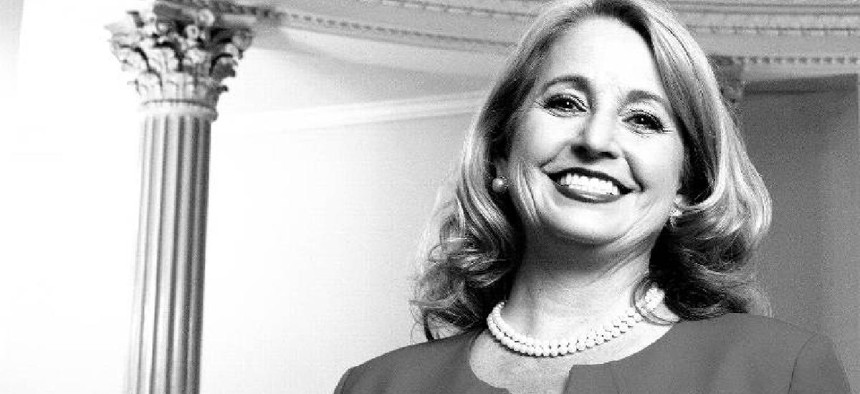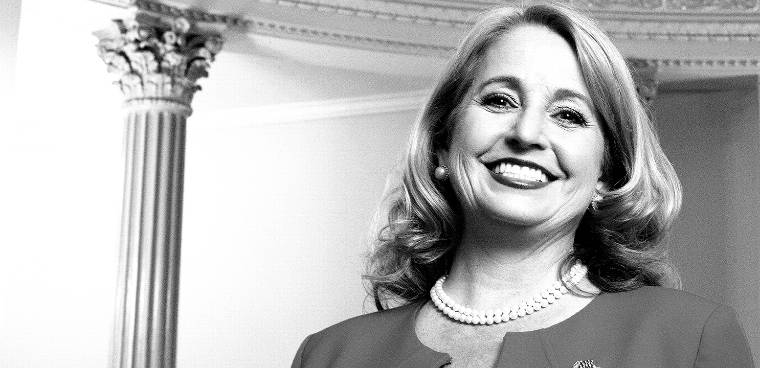Kent leaves solid legacy

In 30 months as federal CIO, Suzette Kent make a lasting impact on the government's cloud, data, cybersecurity and emerging tech efforts.

Departing Federal CIO Suzette Kent leaves behind a durable legacy for federal IT modernization that addresses the financial challenges as well as the technical ones, said those who have worked with her in the federal IT community.
Kent's work on key federal IT policies such as Cloud Smart, Trusted Internet Connection, Federal Data strategy, workforce and data issues, as well as her keen understanding the financial challenges associated with them, will leave a lasting impression on the job and federal IT, said Dave Powner, who directs strategic engagement and partnerships at The MITRE Corporation and is the former director of IT issues at the Government Accountability Office
Kent announced June 25 that she would depart government service in July, and has now decamped for Texas, where she lived before entering government service. She was appointed federal CIO in early 2018, and spearheaded a wide range of Trump administration technology and workforce initiatives. Her tenure was devoted to setting governmentwide standards while also giving agencies the freedom to tailor efforts in mission-appropriate ways.
She won FCW’s 2020 Eagle Award for her work.
The Trump administration picked Kent from the financial services industry to replace outgoing Federal CIO Tony Scott. She was a principal with Ernst & Young and had been a managing partner at Accenture and worked in other capacities at JP Morgan and the Carreker Corp.
That experience, said Powner, served her well in her new CIO role.
“She immediately saw the challenges in federal IT budgeting and funding alignment, especially when it comes to funding IT modernization,” he said. Once in place, Kent went to work building partnerships on Capitol Hill to set up the Technology Modernization Fund and endorse Technology Business Management practices that would help agencies navigate modernization.
That performance wasn’t a given when she was named to the role, as few in the federal IT community didn’t know her name or what to expect from her.
“When Suzette Kent's name surfaced as the likely federal CIO two and a half years ago, many of us … scrambled to find out as much we could about her,” Bill Zielinsky, the former assistant commissioner of the General Services Administration’s Office of IT Category, told FCW. Zielinski is now CIO for the City of Dallas. “She was completely unknown to the Federal IT community and came to us from the banking and financial services industry, so there was very little … that gave us any clues as to how she might approach the Federal CIO role.”
But Kent quickly erased those trepidations, Zielinski said, as she worked to build consensus across the federal IT community to address common problems.
She was approachable, and willing to roll up her sleeves to ensure things got done, he said, and “now the community will miss her tremendously.”
David Wennergren, CEO at the American Council for Technology and Industry Advisory Council, said Kent did an admirable job of learning and then managing complex programs and issues.
“She refocused the government’s cloud efforts through her ‘moving from cloud first to cloud smart’ policy,” he said. Kent recognized cloud priorities had to embrace more than just shifting IT to the cloud, but also include new security strategies like Zero Trust while accounting for thousands of legacy systems still operating on-prem at agencies.
Wennergren said Kent also was instrumental in helping emerging technologies like robotic process automation find fertile ground in federal IT.
Looking ahead, Wennergren said, Kent has also insured a smooth transition for the next federal CIO, hiring Small Business Administration CIO Maria Roat to replace Margie Graves in the deputy federal CIO position.
That successor, said Wennergren, will find a lot of forward momentum from Kent’s work, backed by key legislation including FITARA, Modernizing Government Technology (MGT) act, Foundations for Evidence-Based Policymaking Act, and the 21st Century Integrated Digital Experience (IDEA) Act.
The next federal CIO, he said, will have to keep up the pace of rapid IT modernization, continue the progress Kent made on improving cybersecurity, and adapt new approaches to speed up an increasingly digital, mobile and app-based world
“As we survive the pandemic and recognize the ‘new normal’ that we will all confront, it will be a much more virtual world, with even stronger expectations on being able to work from anywhere, anytime, on any device,” said Wennergren.
“The next CIO has a great set of initiatives to go work on, and won’t need to reinvent the agenda, but rather be extremely focused on successfully executing,” he said.


